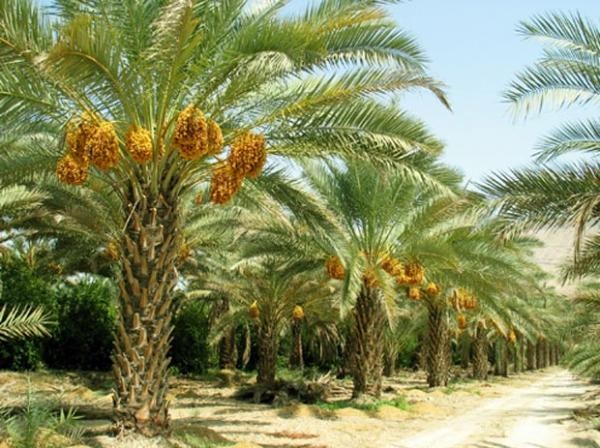Phoenix dactylifera (date or date palm) is a flowering plant species in the palm family Arecaceae, cultivated for its edible sweet fruit. The species is widely cultivated and is naturalized in many tropical and subtropical regions worldwide. Phoenix dactylifera grows 70–75 feet (21–23 m) in height, growing singly or forming a clump with several stems from a single root system. The leaves are 4–6 meters (13–20 ft) long, with spines on the petiole, and pinnate, with about 150 leaflets; the leaflets are 30 cm (12 in) long and 2 cm (0.79 in) wide. The full span of the crown ranges from 6–10 m (20–33 ft).

Dates can be eaten plain or used for cooking in chopped form for cakes, sweet, pudding, bread, ice cream, cereal, candy. Surplus date is used in jam, jelly, juice, syrup, vinegar and alcohol. Touted by whole foods enthusiasts and Paleo eaters, this naturally dry fruit is a powerhouse of minerals, energy and fiber. Eaten plain or stuffed, it makes a nutritious snack. Their low water and high sugar content gives them a shelf-life of many months. Dates made nomadic life and trade possible in the very dry and hot regions of the Middle East and North Africa. Because the tree and its fruit have so many uses — from food to building materials — the date palm is known as the “tree of life” in the Middle East, and it’s the national symbol of Saudi Arabia and Israel. Date palm seeds can go dormant for decades until the right light and water conditions are just right.